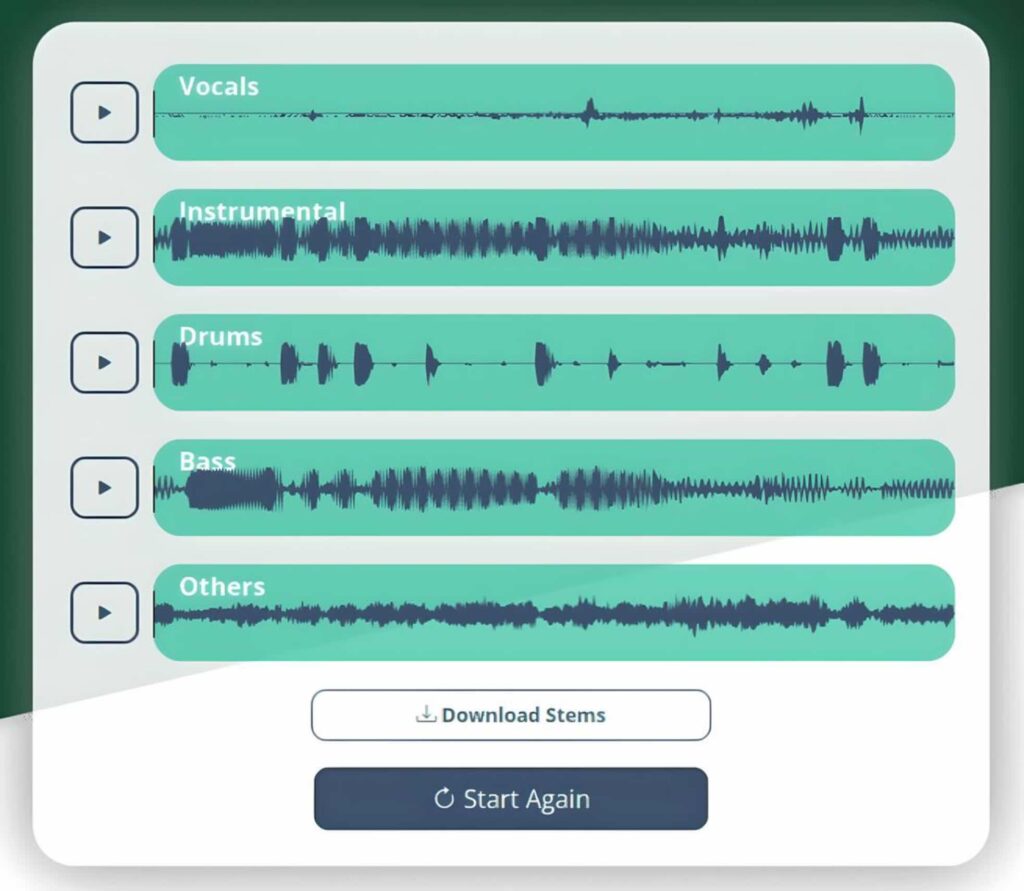- in Production by Bobby Owsinski
- |
- 2 comments
Stems And Tracks – Don’t Mix These Up
I don’t know about you, but I get frustrated whenever I hear a young artist, producer or engineer say something like, “I important all the stems then started to mix” and you see a picture of 40+ tracks, but no stems. I don’t know where it started, but many people today think that the terms “tracks” and “stems” are interchangeable, but they’re not.

First of all, let’s get the definition of “stems” out of the way. A stems mix is a set of stereo submix files that usually consists of a stereo bed track and individual stereo tracks of the most important elements complete with effects. These might include:
- Drums
- Bass
- Vocals
- Background Vocals
- Guitars
- Keyboards
- Anything that’s high and tinkly like triangles or glockenspiel
Sometimes the stems might boil down to just the instrumental track with a separate stems track for the lead and background vocals – it all depends on what you’re asked for, or what you think might be useful later so you don’t have to revisit the entire mix again.
Many musicians and artists today refer to stems when they really mean tracks, which are all the individual mix element files that make up a mix. Stems are stereo groups of these tracks complete with all the effects.
This allows for an easy remix later if it’s decided that the final mix balance of the lead vocal or the solo doesn’t work. In extreme cases, some mixers have resorted to the use of “stems” to keep everyone (mostly the record company) happy.
Stems In The Movies
Stems are widely used in film mixing because a music mixer usually can’t tell what may be too loud or masked by the dialog or sound-effects elements of the movie. In fact, the use of stems originated specifically for film production.
The stems mix gives the dubbing mixer more control during the final mix if required. It’s typical for the dubbing stage to ask for a stereo (or even 5.1 or 7.1) rhythm submix, a submix of any lead instruments or voices with effects, the bass by itself, and any instruments with a lot of high frequencies, all isolated on their own submix.
Stems In Mastering
There was a brief time when mixers, unsure of how their mix might translate to other playback systems, shipped stems off to the mastering engineer to balance up before mastering. Although this sounds like a good plan, mastering engineers almost universally rejected this idea, as it’s one more level of responsibility and hassle that most mastering engineers prefer not to deal with. Although there are some mastering engineer who are also mixers who are not opposed to working this way, most dedicated mastering engineers just want to master and not worry about balancing mix elements.
To wrap it up, let’s call mix elements what they are in order to eliminate any confusion. Tracks are individual mix element files that make up a mix. Stems are stereo groups of these tracks complete with all the effects. Simple, right?
You can read more from The Mixing Engineer’s Handbook and my other books on the excerpt section of bobbyowsinski.com.

